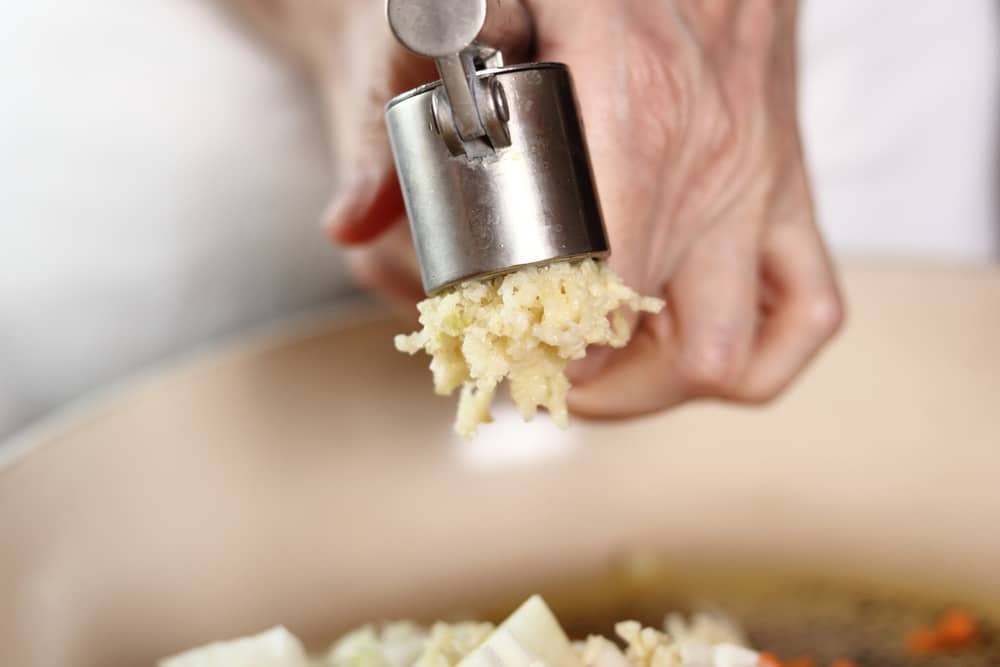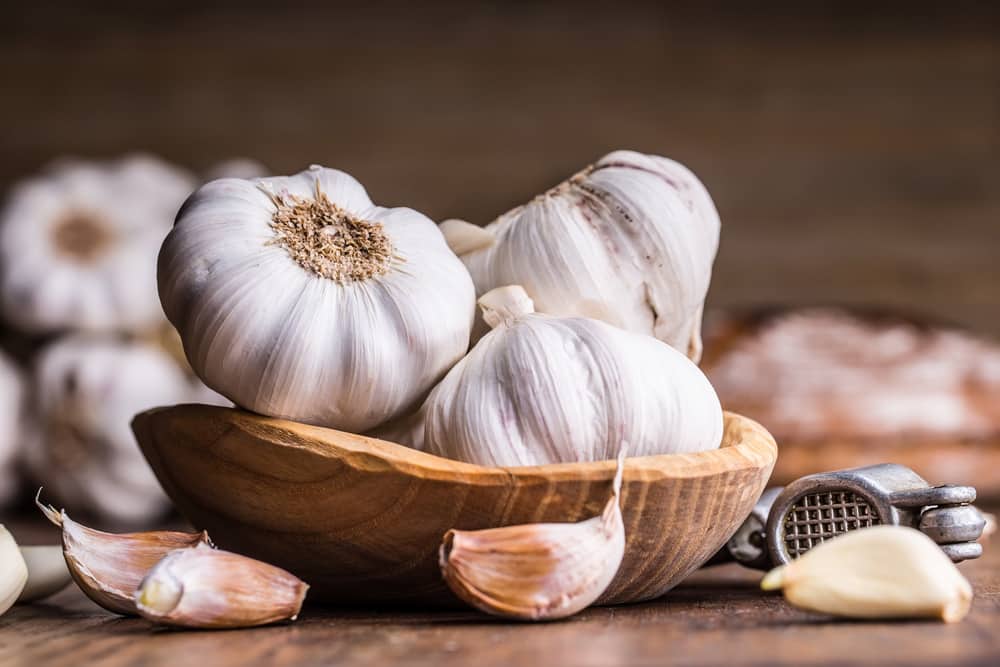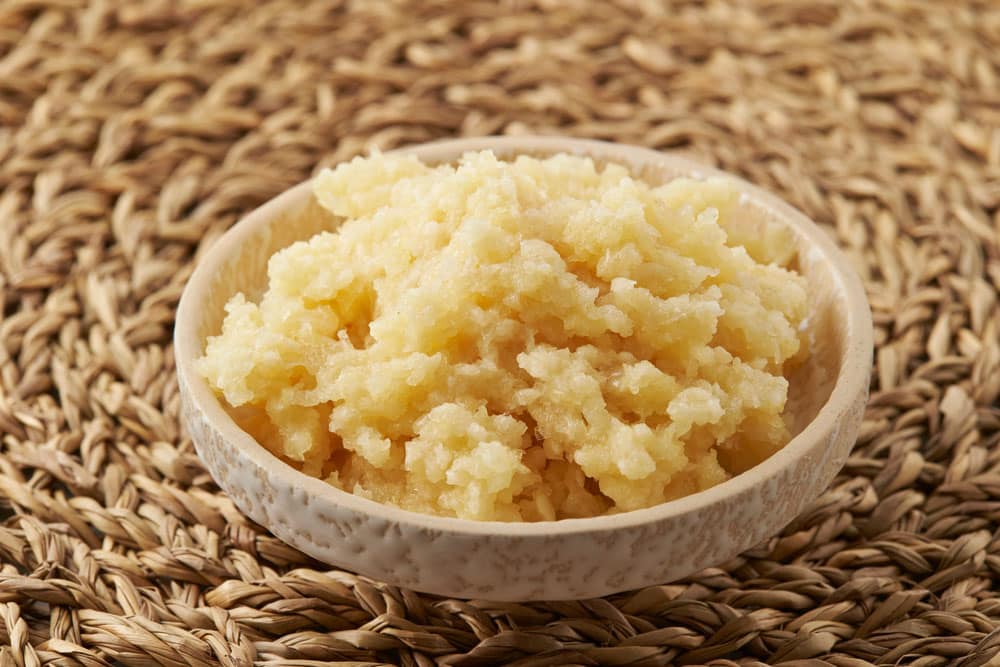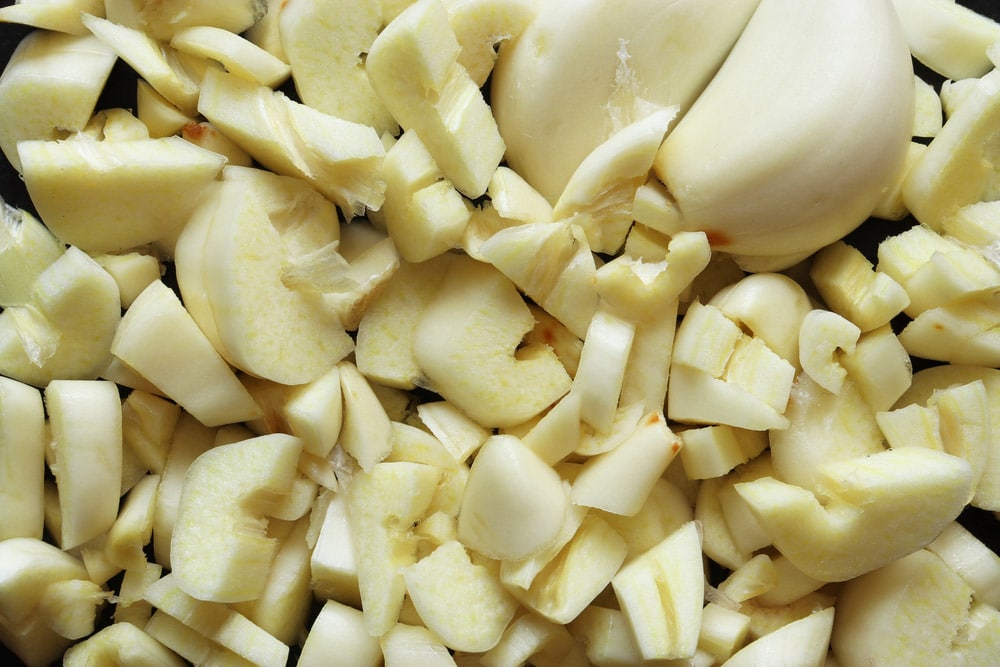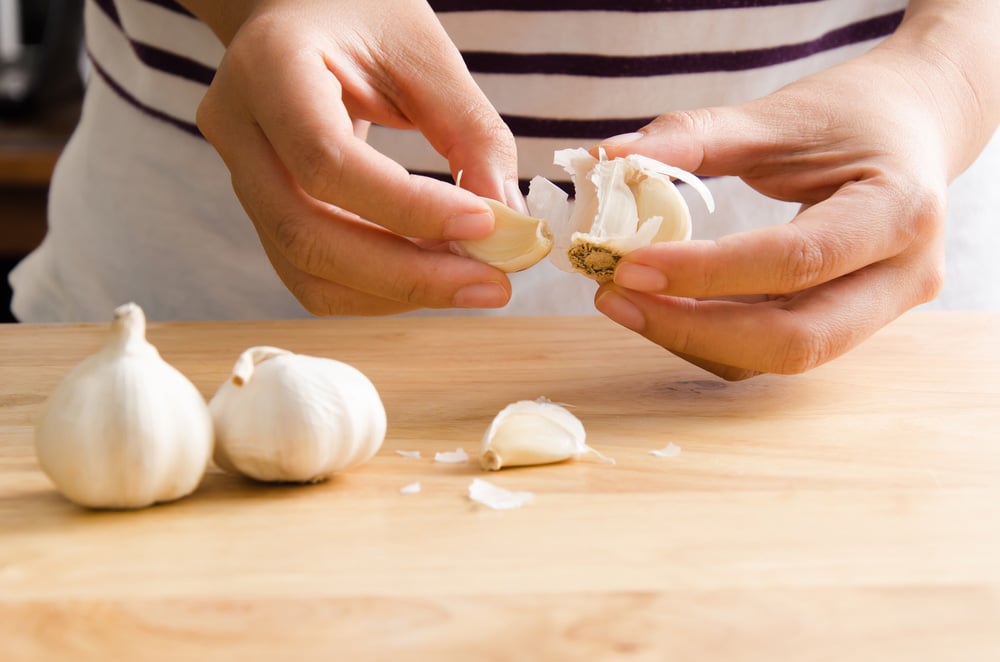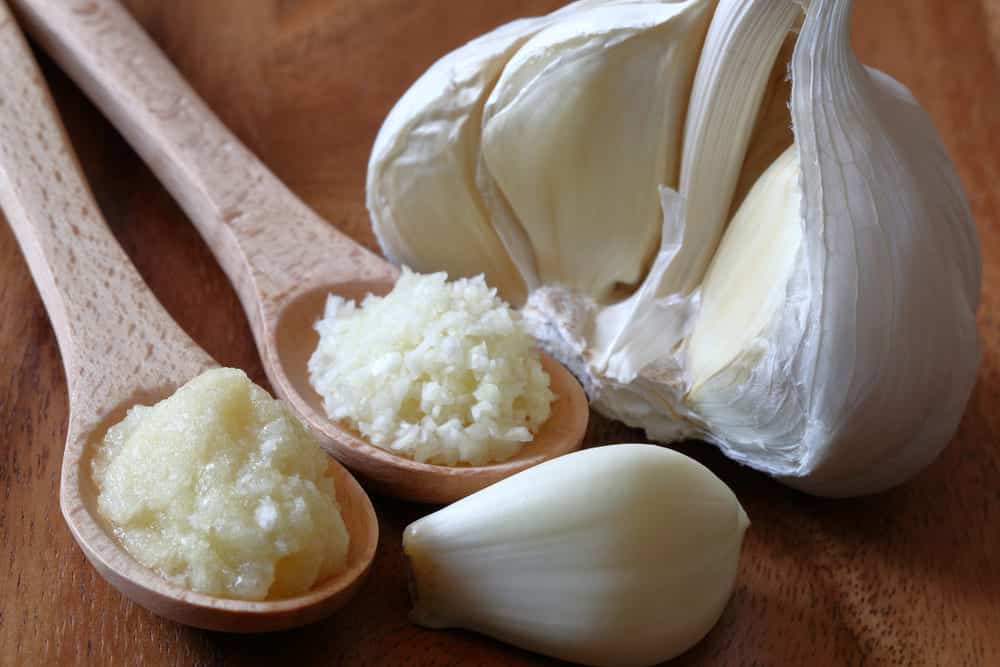
Every chef who loves cooking and experimenting with recipes knows that garlic is an important ingredient that every kitchen should have! Whether you’re preparing a pasta dish or another savory meal, most of them are incomplete without garlic.
What is the best way to add garlic to a recipe for maximum flavor and aroma? Which is better when comparing minced vs pressed garlic? Keep reading as we share everything you need to know about the two options!
Minced vs Pressed Garlic: Quick Comparison Table
Use this table to give you a quick overview of the differences between minced and pressed garlic.
| Description | Minced Garlic | Pressed Garlic |
|---|---|---|
| Texture | Coarse or fine (depending on preparation method) | Smoother consistency |
| Preparation methods | - Hand cutting with a knife - Grating with a microplane tool | - Garlic press - Twisters - Garlic rockers - Peelers - Magical cylinders |
| Flavor and aroma | - Mild if coarsely minced - Strong if finely minced | Potent and pungent |
| Burn | Depends on mincing method but not as potent as pressed garlic | Strong |
| Aftertaste | Sweet | Slightly bitter |
| High heat cooking | - Finely minced: Mild and sweet - Coarsely minced: Slightly acrid | Strong |
| Slow cooking | Mellow garlicky taste | Mellow garlicky taste |
Minced vs Pressed Garlic
Minced vs Pressed Garlic: How It is Prepared Matters
Deciding to use minced or pressed garlic for a recipe shouldn’t be based purely on the convenience of either method! How the garlic is cut, minced or pressed makes an immense difference to how the food will taste. It also changes the texture of the garlic and the dish being prepared.
Choosing between minced or pressed garlic depends on how strong you want its aroma and flavor to be. The key thing to know about preparing garlic is that the more the cloves are cut, the more cells are ruptured which results in potent flavors and aromas.
What Makes Garlic Smell and Taste the Way it Does?
Understanding what makes garlic smell and taste the way it does helps explain why the cutting method makes all the difference to how this ingredient will impact a recipe. It all comes down to the survival of the plant in nature!
The pungent smell associated with garlic is intended to protect this plant against pests! When a pest attacks the garlic cloves, the cells are damaged and a chemical called alliin and an enzyme known as alliinase come into contact with each other.
Alliinase converts alliin into allicin which is responsible for the release of the strong, pungent smell and taste that repels pests. Mincing or pressing garlic impacts how many cells are ruptured and how much alliin and alliinase are released, affecting the potency of this ingredient.
The more finely garlic is chopped, the more potent the aroma and flavor of the clove.
Other Factors Influencing Garlic Potency
Other factors come into play that affects the potency of garlic in both aroma and taste. These include:
- Variety: There are various types of garlic and each of them has its own unique flavors and smells.
- Temperature: The colder the climate under which garlic grows, the stronger its flavor and aroma.
- Cooking fats: Cooking garlic in butter results in a milder flavor compared to cloves prepared in unsaturated vegetable oils.
Mincing or pressing garlic ultimately changes its potency but knowing what variety it is, where it’s grown, and which fats you’re using influences the outcome of a dish.
Minced vs. Pressed Garlic: What is the Difference?
Minced Garlic
Mincing garlic turns the cloves into smaller, more pieces that spread throughout the food when added to a recipe. When hand-cutting garlic into smaller pieces, the aroma and flavor are milder but still impart a delicious taste when added to recipes.
Minced garlic can be coarse or fine depending on the method used to prepare it and some examples include:
- Hand-cutting with a sharp knife into coarser pieces
- Using a Microplane tool to finely grate the garlic
Coarsely minced garlic has fewer, chunkier pieces which are larger compared to cloves being finely grated or chopped. Finely minced garlic has far smaller pieces. Both coarsely and finely minced garlic has a strong flavor and is fresher than using garlic powder or paste commonly found in supermarkets.
Garlic can be minced at home but local supermarkets and specialized food stores do sell pre-minced cloves in jars. Bear in mind that this product won’t be as fresh as when mincing the garlic yourself in your kitchen before preparing a recipe.
Minced garlic doesn’t change the appearance of your dish and still imparts a mild but enjoyable taste and aroma to the recipe. Summing it up, using minced garlic in a recipe adds freshness while still giving a pleasant, garlicky flavor to the meal.
Pressed Garlic
Diners often complain of large garlic pieces ruining the taste of a dish while causing bad breath and overpowering flavor in the mouth. If you don’t like chewing on garlic while enjoying your delicious sauce, you could opt to press the cloves before adding them to the recipe.
Larger pieces can ruin the overall flavors of a recipe if they don’t mingle well with the other ingredients. Pressed garlic is smoother in texture while still releasing all its flavor and essence which are equally distributed throughout the recipe.
While this method of garlic is more aggressive in flavor compared to the minced option, it doesn’t leave behind a bad burning taste in the mouth or an acrid fragrance.
The best way to get pressed garlic is by using a garlic press. There are various types available on the market and they include:
- Twisters
- Garlic rockers
- Peelers
- Magical cylinders
Opting for the simplest design is best if you’re pressing your own garlic in your home kitchen making light work of the task!
It’s also often the most convenient way to make pressed garlic saving you time during preparation. However, you do still need to peel off the skin before adding the cloves to the garlic press.
Choosing Between Minced or Pressed Garlic
In most cases, people can’t distinguish the difference between pressed and minced garlic. However, if the garlic cloves have been properly minced or pressed, you’ll notice the variation in potency between the two preparation methods.
While hand-chopping garlic is the most commonly used method for mincing garlic, it’s not easy to achieve ultra-fine pieces. If you’re looking for a smoother consistency, you would be better off using a garlic press.
Using a garlic press gives you cloves closely resembling the minced form similar to puree. It also means you can add pressed garlic to most recipes without adding large chunks to the dish.
When it comes to choosing between minced or pressed fresh garlic, there are no major differences that’ll alter the taste of your dish dramatically! Minced or pressed garlic can be used when adding more than one clove to a dish without drastically changing the outcome of the recipe.
The flavor will be similar. Other dominant ingredients in a recipe aren’t heavily impacted by whether you choose pressed or minced garlic. The same applies to whether you cook the dish for a longer period or not.
What You Need to Know When Using Garlic as an Ingredient
While pressed and minced garlic imparts subtle differences to a recipe, as the main ingredient and how it’s prepared still influences the outcome of the dish’s flavor and aroma. Minced garlic releases an intense and strong flavor depending on the size of the pieces.
Coarsely chopped garlic has a moderate flavor while lightly crushed garlic leaves behind a subtle taste to the dish. On the other hand, pressed garlic releases the clove’s oils, resulting in a potent and pungent aroma and flavor.
Cooking Method
The cooking method influences how pressed or minced garlic tastes and smells in a recipe. When cooking at high heat using butter, the following is noted:
- Coarsely minced garlic: The flavor and aroma are mild while leaving a sweet taste in the mouth. There are chewable parts in the dish.
- Finely minced garlic: The taste can be slightly acrid with a faster burn on the palate and a mildly bitter aftertaste.
- Pressed garlic: A stronger flavor and aroma with a slight burn in the mouth with a moderately sweet taste.
Slow, longer cooking methods result in little difference between using minced or pressed garlic in the recipe. Pressed garlic will smell more pungent at the start of cooking the dish but it wears down to a mellow flavor and aroma the longer it cooks.
Which Should You Choose?
When comparing minced garlic vs pressed garlic, both complement most dishes. Pressed garlic leaves behind a more intense, pungent aroma and flavor. Minced garlic adds a powerful aroma and flavor if finely ground but chunkier pieces are mellower.
Compared to pressed garlic, the minced method is milder in both aroma and flavor. The cooking method does make a difference to the potency of garlic as an ingredient as well as the type of fats used.
Deciding on pressed or minced garlic for your recipe depends on how much flavor and aroma you want for your dish and your personal preferences when it comes to taste!
